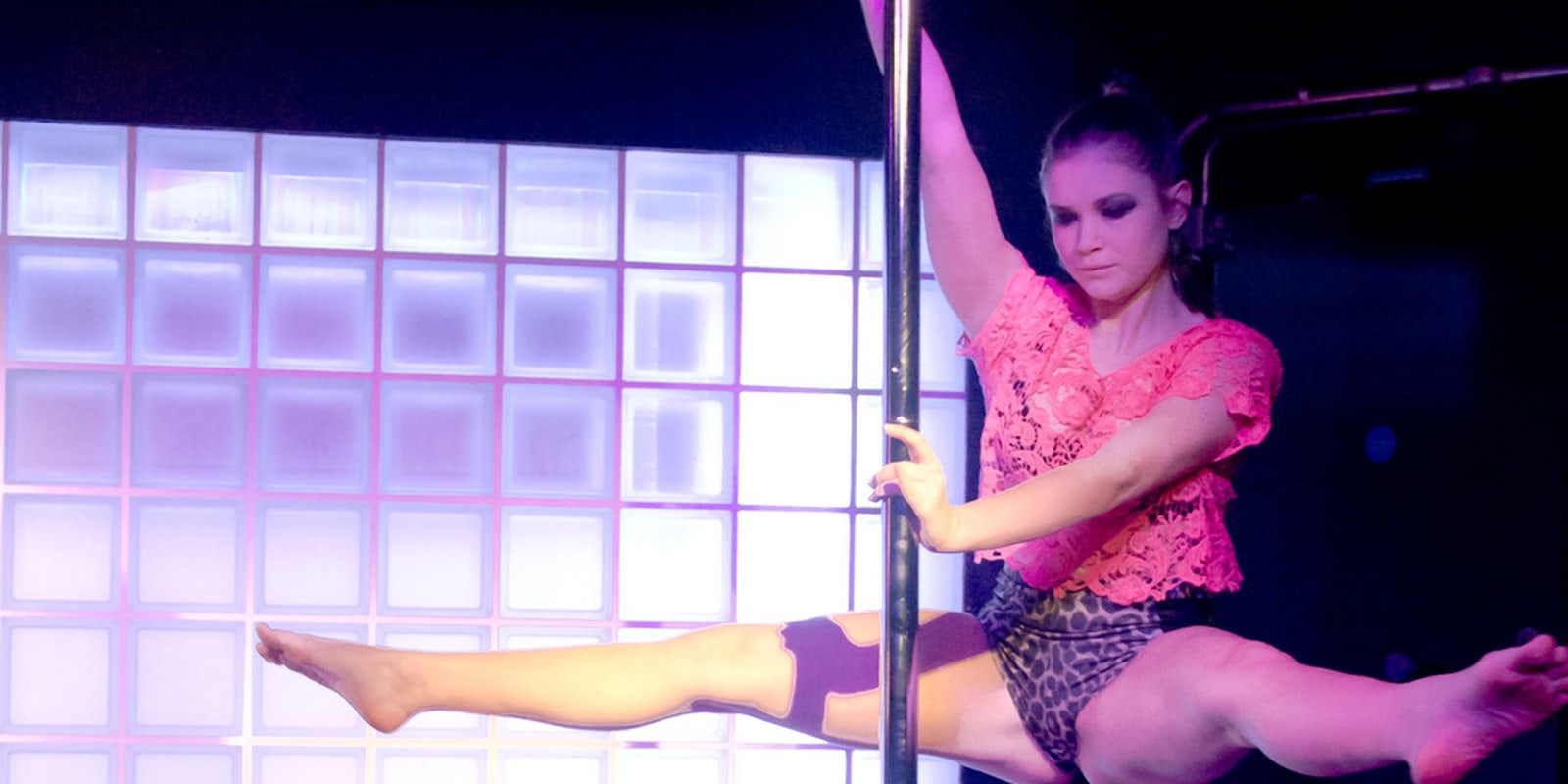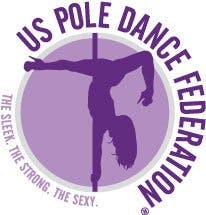One of the media’s favorite pastimes is to portray strippers as ruthless and conniving sluts, forever plotting to snatch away men and their money. Last February, for instance, Kanye West told a radio station that he had to take “30 showers” after dating former stripper Amber Rose, before courting the demure and irreproachable Kim Kardashian. And earlier this month, a beleaguered wife made headlines for being forced to “stripper-proof” her husband, because the strippers in question committed the unforgivable sin of requesting compensation for their services.
One of the latest examples of shaming strippers comes from a community that appropriates stripper traditions, but vehemently denies any association with the sex industry. Many pole dance hobbyists, or women who practice the pole dancing fitness trend, are on a mission to distance themselves from exotic dancers.
That’s what happened last weekend in Beijing, when competitive pole athletes at the World Pole Dance Championships set the record straight to the AFP that their sport is inspired by ancient Indian and Chinese dance traditions and has absolutely no relationship to strippers who might claim otherwise.
“We call it ‘pole fitness’ to get away from the negative connotations… it’s more part of the sports industry than stripping industry,” pole dancer Kat Bailey told the AFP.
Bailey’s comments reflect the growing divide between pole-dancing enthusiasts and their compatriots in the sex industry. What started as a niche fitness activity has blossomed into a mainstream option at both dedicated studios and full-service gyms. But part of that success is the result of distancing those who do pole work for exercise from those who do pole work for money as strippers.
The World Pole Dancing Championship happened — and so did this. http://t.co/h4XzJY9jQJ pic.twitter.com/917zTJnS9m
— USA TODAY (@USATODAY) April 14, 2015
Erotic performance, or serious sport? Hundreds take part in Pole Dancing World Championships http://t.co/wYat3vGSCT pic.twitter.com/I9hdlWp5BG
— Global News Toronto (@globalnewsto) April 13, 2015
In a report on the growing popularity of the sport, Buffie McLaskey told the Bangor Daily News that there was “‘no type of stripper vibe’” in the studio where she practiced pole-dancing, adding, “as you can see, I’m not a stripper. I’m just a regular person.’” It doesn’t take a great deal of reading between the lines to figure out that McLaskey clearly views strippers as “irregular” people.
The US Pole Dance Federation (USPDF) explicitly notes what it sees as the hard distinction between pole-dancing and stripping on its Facebook page. “It’s significant to understand that pole dancing is not stripping,” the group’s page says. “This misconception prevents pole dancing from becoming something every woman should be able to enjoy.”
For more women to enjoy it, these groups go to great lengths to distance themselves from the sex industry and erase the strippers who pioneered pole work on stage in the clubs. Yet they also feature a logo of a silhouette of a woman wearing stilettos, flipped upside down with her legs splayed.
Though the sport allegedly has nothing to do with stripping, its marketing relies almost exclusively on stripper aesthetics and sex appeal. But apparently, keeping their tops is really a substantive enough difference that the entire relationship to strippers can be cavalierly erased.
“One of my instructors in a pole class once gave another student a serious look and said, ‘Strippers aren’t dancers, they’re hustlers,’ ” says Charlotte Shane, who takes pole fitness courses. “She’d clearly made this correction many times before. The expression on her face made me relatively confident that she might not have thought it was a badge of pride.”
Shane noted there was an assumption that no one in the room could possibly be a stripper, making it clear that not only was pole fitness not inspired by strippers, they were not welcome in her class.
Not only was pole fitness not inspired by strippers, they were not welcome in the class.
“This is a tactic studios have come up with to clean up the image of pole work and repackage it in a shape that’s acceptable for mass consumption, with no lingering taint of the sex industry clinging to it, just a faint aura of edgy chic,” says Matilda Bickers, a stripper and sex work rights activist.
Many claim that pole fitness is inspired primarily by Chinese pole and the ancient Indian mallakhamb tradition and others make the extra effort to disparage pole dancing as it is used by strippers as sullying “real pole dancing.” Bickers calls the attempt to claim modern pole fitness as the extension of ancient Asian traditions “a pseudo-spiritual orientalist face lift” not dissimilar from clumsy western appropriations of yoga.
The irony is that these pole experts aren’t even appropriating consistently. “Chinese pole is an acrobatic form usually done by men, not by women,” says Kate Zen, a pole dancer who trained in Chinese acrobatics and aerial in China who also happens to be a stripper. “The Asian form has completely different moves. There is more appropriation of French ballet and Russian aerial than Chinese pole.”
As for the ancient Indian sport of mallakhamb, it is reportedly dying out in India due to a dearth of performers and is actually relatively unknown there. None of the pole instructors to whom I reached out to see if they had been trained by experts in the Chinese or Indian traditions replied with comment.
“The ubiquity of pole work in pop culture and its subsequent popularity has little to do with men doing acrobatics on wooden poles and everything to do with Western culture’s obsession with female bodies and commodified sexuality,” says Bickers. So although studio websites feature animated stilettos and glammed up cartoons with their legs wrapped around poles, there is a willful erasure of the women whose labor inspired the sport.
One of the most visible examples of the erasure of strippers from the pole tradition was in a video that went viral in February called “Why I Dance.” In the video, women who do pole fitness wear black bondage-inspired garments, thigh-high stockings, and fishnets and dance sensually both on and off the poles in a sunlit studio. The dancing visuals are punctuated by women holding up signs with titles like “Friend” “Activist” and “Little Sister. These signs are supposedly meant to express the women’s external identities, but to strippers, they read as: “Things That Make Me Obviously Not a Stripper.”
The media ate up the message. PopSugar opted for the headline, “These Women Are Stripping For All the Right Reasons.” Refinery29 lauded the video’s portrayal of “women dancing for themselves.” It was so beautiful it made hairs stand on end at Upworthy. The message was clear: pole dancing that borrows heavily from what women have been doing in strip clubs for decades is acceptable when personal empowerment is the purpose, rather than something frivolous like actually earning an income. The creators’ explanation did little to assuage the feelings
“‘Pole dancing is so often associated with stripping, which isn’t always true,” producer Julia Roth told BuzzFeed. “‘We wanted to break down the judgments about people who pole dance.’’’
Some might say, “Oh come on, let the middle class ladies have their exercise class! What’s the big deal with them feeling a little sexually empowered?” But it is not the empowerment of other women that women like Zen and Bickers take issue with. It’s that elevating women who pole dance as a leisure activity is degrading to the stigmatized women who do it as a profession.
Adding insult to injury is the insistence by some members of the pole fitness community that they are actively being marginalized for their participation in the sport. The cognitive dissonance displayed in a piece by Katie Johnson, a dancer who appeared in the “Why I Dance” video, is a case in point. Johnson’s piece makes the case that their fitness activity comes with real risks:
We’re changing the world and on fire! However. [sic] We are also pushing a lot of buttons and feeling the backlash. I was point blank told with concern and love from a respected entertainment industry professional that this film (and all my modeling for that matter) will only make it harder for me to work as a TV writer. It’s just too much. Women will judge or be jealous, men will look at you and see sex, not a professional.
Though strippers exist in the public consciousness as punch lines, we live in a society that is actively hostile to all women in the sex industry. It is a society in which a man can try to use the Public Records Act to find the names and addresses of strippers to harass them. It’s a society in which teenage strippers can be murdered and have their case largely ignored by the media, because society doesn’t value their lives. For Johnson to write a self-serious reflection that fails to recognize her own culpability in elevating the view that dancing for one’s self is superior to dancing for income, is painfully myopic.
It’s also inaccurate for Johnson to say that appearing in a video promoting pole dancing might have a negative impact on her writing career. Surely a pole fitness enthusiast can get a writing job when former strippers like Diablo Cody have Academy Awards, Amber Rose has a flourishing social media empire and a book deal, and in which strippers like myself can manage to secure hundreds of bylines despite my background.
Those who believe there is any meaningful stigma to pole work as exercise would do well to learn what women who pole dance as part of their job face because of the stigma attached to their erotic labor. And if they are still scared of the minor judgments related to pole work, women like Johnson would do well to pick up the one skill that all strippers have in abundance: a totally ruthless hustle.
Photo via uclu photosoc/Flickr (CC BY SA 2.0)


